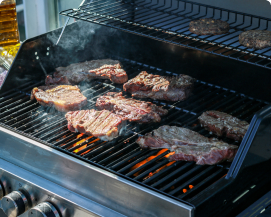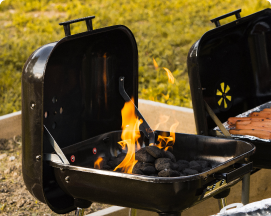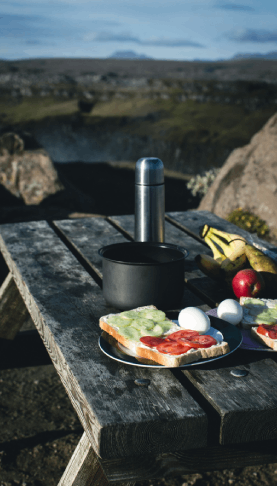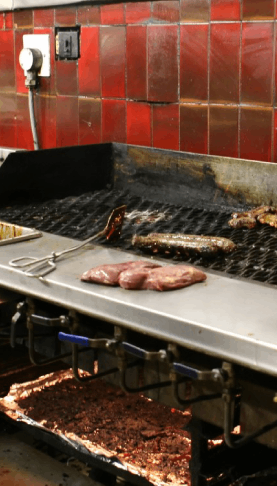A fast, clean repaint by trusted pros can refresh your dining room, boost guest comfort, and even help table turns, and yes, improve photos of your food. The simplest path is to hire skilled teams who understand restaurants, schedule around service, use low-odor coatings, and guide color choices that fit your brand. If you want a name to start with, look at painters Denver. They can help plan, quote, and execute without turning your Friday night into a construction zone.
Why paint matters more than most owners think
Paint is the first thing guests see, even when they do not notice it. Wall color frames plates. Sheen changes how the room reads on a phone. A scuffed baseboard says something, and not what you want. I have sat with a menu in a room that felt gray and tired, and I remember the room more than the meal. That is not fair to the chef, but it happens.
Fresh, well-chosen paint is silent service. It supports the food, the team, and the check without getting in the way.
You can use paint to guide the eye to the bar, calm a noisy corner, or make a small dining room feel open. You can also pick the wrong sheen and spend the next year chasing smudges. A pro who paints restaurants every week will notice things you might miss, like grease vapor paths over the expo window or the scuff line along the host stand.
Color choices that support the menu, not fight it
Color talk often gets fluffy. You do not need that. You need a palette that looks good at 7 am, noon, and 8 pm, under your exact lights. You also need paint that cleans up without flashing.
Color and appetite, stripped to the basics
Food looks best when the background is calm and the lighting is warm to neutral. Strong color can work, just place it with care. Here is a simple guide you can use for the first pass.
| Color family | What guests feel | Where it works | Use with care |
|---|---|---|---|
| Warm neutrals (cream, warm gray, tan) | Comfort, warmth, a little hunger | Main dining, booths, bakery walls | Can look yellow under very warm bulbs |
| Earth tones (terracotta, olive, clay) | Grounded, hearty, cozy | Bar areas, BBQ, hearth cooking | Too dark in small rooms without strong light |
| Cool neutrals (soft gray, greige) | Clean, modern, quiet | Cafes, fast casual, fine dining with wood accents | Can wash out faces in photos if lights are cool |
| Muted blues | Calm, crisp, a bit reserved | Seafood counters, open kitchens, restrooms | Too much can feel cold near stainless |
| Muted reds and corals | Energy, appetite, lively pacing | Accent walls, bar backs, artwork fields | Large fields can feel loud during long meals |
| Deep charcoal and near-black | Focus, drama, plates pop | Ceilings, bar fronts, feature walls | Shows dust, needs careful lighting |
I like to test colors with plated dishes. Lay a white plate with your signature entree near the wall and take a quick photo during service lighting. If the greens fade or the sauce looks flat, nudge the color. Tiny shifts matter.
Test color with food, not with empty rooms. Rooms lie. Plates tell the truth.
Finish matters as much as color
Most dining rooms do best with eggshell or low-sheen satin. These clean well but do not glare. Trim and doors can handle satin or semi-gloss. Kitchens need scrubbable, high-build coatings and specialty products near heat or moisture.
– Matte hides flaws but scuffs fast.
– Eggshell balances touch-ups and cleanability.
– Satin is easier to wipe, shows more light.
– Semi-gloss is tough but can look harsh under downlights.
What pro restaurant painters actually do differently
Not every painter understands a kitchen line, tickets, or a Friday flip from lunch to dinner. Restaurant work is its own world.
Containment and odor control
Good crews mask, tent, and pull negative air if needed. They pick low-odor, low-VOC coatings so you can keep the room usable. They also stage gear away from food paths. That seems basic. It is not always done.
Night work and sectional schedules
Crews who work restaurants paint in zones. They finish a section each night so you can seat guests the next day. They label every chair stack and every art piece, then put it back before open. It is a rhythm.
Paint in sections small enough to cure by lunch. Guests should never sit next to tacky trim.
Surface prep for heavy use
Prep makes or breaks the job. Expect patching, caulking, degreasing, and sanding of chair-rail scuffs. Door frames near the kitchen need extra primer. Ceiling tiles near the line often need stain blocker. Exterior sills in Denver sun need a different primer than a shaded alley wall. A restaurant pro will sort that out without you asking.
Front of house vs back of house, different needs
Both areas need fresh paint, but not the same paint.
Back of house coatings that stand up
– Washable, moisture-tolerant paints near dish and mop sinks
– Epoxy or urethane systems for floors that see grease and carts
– High-heat rated finishes or stainless panels near cook lines
– Light-reflective whites to brighten prep without buzzing the eyes
Some owners skip BOH, thinking guests do not see it. Health teams do. New hires do. Your chefs do. A bright, clean prep room helps morale. I think it also speeds work.
Front of house that fits service flow
– Darker lower walls or chair rails where chairs hit
– Tough trim on doorways and host stands
– Calm fields behind the bar so bottles read clearly
– Accent zones that frame art or menu boards
You can also draw gentle paths with color. For example, a slightly deeper tone at the host stand nudges guests to gather there without signs.
Denver-specific factors you should consider
Denver’s dry air, strong sun, and fast weather shifts change how paint ages. It is not the same as a coastal city.
– Exterior sun exposure is intense. South and west sides fade faster.
– Winter brings freeze and thaw. Hairline cracks appear in stucco and trim joints.
– Late day storms can mess with dry times. An experienced crew watches the radar and the wind.
– Interior humidity is low. Some coatings set fast. Crews often adjust reducers and tip sizes for spraying.
Exterior repaint timing matters. Late spring through early fall is safer. Interior work can run year-round, and winter nights can be perfect for dining room sections.
Costs, value, and where to spend
Budget talk is tricky, but not impossible. You can plan with ranges, then refine after a site walk.
| Area | Typical finish | Ballpark cost per sq ft of wall | Notes |
|---|---|---|---|
| Main dining walls | Eggshell | 1.50 to 3.00 | Higher if heavy repair or high ceilings |
| Trim and doors | Satin or semi-gloss | 2.00 to 4.00 | Door rework, hardware masking adds time |
| Ceilings | Flat black or flat white | 1.25 to 2.50 | Spray setup and ventilation affect time |
| Kitchen walls | Scrubbable acrylic | 2.00 to 4.00 | Degreasing and stain block are key |
| Epoxy floor systems | 2-part epoxy with quartz | 5.00 to 10.00 | Full cure needs planned downtime |
| Exterior facade | UV resistant acrylic | 1.75 to 3.50 | Lift rental for high work adds cost |
These are starting points, not promises. Two restaurants can have the same square footage and wildly different prep needs. One wall with wallpaper removal or flaking paint can change the day.
Spend where hands touch. Doors, rails, host areas, and restrooms see the worst wear and get the most guest focus.
Plan a repaint without closing your doors
You can keep service going if you plan in detail and keep the plan flexible. Here is a simple phased approach I have seen work in busy rooms.
Week 1: Decisions and samples
– Walk the site with the crew lead. Point at every problem area.
– Pick three color candidates for each zone. Order sample quarts.
– Paint large samples on site, not on cards. Watch them at night and during lunch.
– Approve sheens room by room.
Week 2: Schedule and prep
– Map zones that seat 20 to 30 percent of the room at a time.
– Block those tables in your booking system.
– Plan night work from close to open.
– Stage a storage area for chairs and art. Label everything.
Week 3 and 4: Paint in sections
– Night 1: Patch, sand, and first coat.
– Night 2: Second coat and trim.
– Morning reset: Chairs, art, and menu boards back in place.
– Repeat until the room is done.
For the kitchen, try a Sunday to Tuesday window for heavier coatings. If you run seven days, pick a short holiday or a weather lull. Short pain, long gain.
Common mistakes and how to dodge them
– Picking color at the paint counter with cool fluorescent lights
– Using matte paint in a booth line, then regretting every shoe mark
– Painting during service with fans that blow dust onto wet paint
– Leaving art on the wall and cutting around it
– Forgetting to match the ceiling color to new wall tones
– Ignoring baseboard repairs, which makes the new wall look old
If you do only one thing, test sheens where guests touch walls. The right sheen solves half your cleaning problems.
Finishes and products that work well in restaurants
You do not need brand names here, just features to look for.
– Low-odor, low-VOC coatings for FOH
– Scrubbable acrylic enamel for doors and trim
– Stain-blocking primers for smoke or grease shadows
– Mildew-resistant paints for restrooms and mop sinks
– Elastomeric or flexible caulks at wood joints that move
– UV-resistant exterior paints for sun-facing sides
For ceilings in open kitchens, many rooms use flat black. It hides ductwork and gives depth. It also shows dust if you do not clean vents, so plan for that.
Exterior paint that pulls guests in
Curb appeal is real. A clean facade makes the menu by the door feel safer to try. Denver sun will test your colors, so lighter, stable tones last longer. Deep colors can work with the right paint and primer stack.
– Refresh door color twice as often as walls
– Seal wood elements every year or two
– Watch south and west faces for early fade
– Keep railings and handholds to a tougher spec
A neat touch is a carefully chosen front door color that appears again at the bar or on check presenters. Guests notice, even if they do not know why.
Color ideas by concept, with caveats
I do not love rules, but patterns exist. Use these as a start, then test with your food under your lights.
Cafes and breakfast spots
Warm whites, light wood, and a soft color like muted sage or pale clay. Eggs and pastries look great against these. Avoid very cool grays in the morning. They flatten coffee.
Seafood and raw bars
Soft neutrals with a medium blue or teal accent. Plates with ice and shellfish read clean. Keep stainless from feeling cold by adding wood trim or warm bulbs.
BBQ and hearth cooking
Earth tones and charcoals. Let smoke and wood be part of the vibe, not the whole story. A deep accent behind the bar can look strong, but give eyes a place to rest.
Sushi and minimalist rooms
Simple neutrals that let fish color and ceramics shine. Small accents in deep indigo or charcoal work well. Avoid glossy walls, glare is not flattering.
Wine bars and tasting rooms
Neutral fields, warm bulbs, darker ceiling, and textured plaster or a dry-brush glaze on one wall. It is easy to overdo texture. Keep it subtle.
Small details that help service
– Color-code server stations lightly so staff finds things quickly
– Use darker paint under bar ledges to hide shoe marks
– Pick a scrubbable paint for the lower 36 inches in hallways
– Add a clear coat on murals at hand height
– Paint a test panel by the dishwasher and clean it daily for a week to see how it holds up
How to pick the right crew
Ask plain questions. You want clear answers.
– How many restaurant jobs did you finish in the last year?
– Can I see a schedule from one of them?
– What is your plan for odor, dust, and daily reset?
– Who is on site each night? Name, not just a company.
– What coatings do you recommend for each area, and why?
– What happens if paint peels in 6 months on a door frame?
It is fine to ask for a small paid sample. A crew that welcomes it is usually the one you want.
Document the plan, then adjust during the job
A short written plan beats a long talk. It helps when things change, which they will.
| Item | Owner | Target date | Notes |
|---|---|---|---|
| Color approvals and sheens | You | Day 3 | Samples viewed at lunch and dinner |
| Zone map and seating blocks | You + crew lead | Day 4 | Update host stand notes |
| Material order | Crew | Day 4 | Include touch-up kits |
| Night work start | Crew | Day 7 | Section A walls and trim |
| Daily reset check | Manager | Each morning | Seats, art, and POS clear |
If your bookings spike, pause a zone and paint a back hall instead. A flexible crew will pivot.
Keep the room fresh after the last coat dries
Paint lasts longer with simple habits. Nothing fancy.
– Hang chair-back bumpers where chairs hit walls
– Train staff to lift not drag high chairs near walls
– Wipe walls weekly with mild soap, not harsh degreasers
– Keep a labeled touch-up kit on site
Build a touch-up kit: one quart per color, the exact brush, a small roller, blue tape, and a rag. Store it where only managers can reach it.
What about murals, graphics, and branding?
Murals can be great. They can also dominate the room. If you add one, protect it with a clear, matte topcoat at hand height. For logos or stripes, use paint, not vinyl, in high-touch zones. Paint ages with the wall and stays cleaner.
If you like a bold graphic, keep other walls calm. A little restraint goes a long way. I realize that sounds like a contradiction after saying color can drive appetite. Both can be true. The trick is balance.
Small anecdotes from real rooms
– A breakfast cafe near Broadway had a gray that looked fine at night. At 8 am, it felt cold. We warmed it by a hair. Coffee looked richer. The owner swore check average ticked up. Maybe it did. Hard to prove, but guests stayed longer.
– A sushi bar fought scuffs by the banquette. One coat of a tougher eggshell and a darker tone solved it. They stopped touching up every week.
– A steakhouse painted the ceiling deep charcoal over the bar. Bottles glowed. Servers said the room felt calmer, which helped pacing.
These are small changes. They add up.
FAQ
Will paint smell affect service?
A good crew picks low-odor products and works at night. With fans and a clean reset, guests should not notice. If they do, you can move seating for a day.
How long before I can cook or seat near fresh paint?
Walls are usually fine to touch in a few hours and ready for gentle cleaning in a week. Oil and steam near the line need longer cure times. Plan kitchen coatings for a short shutdown.
Is matte paint ever a good idea in a dining room?
Sometimes on ceilings. Rarely on walls where chairs or jackets touch. It hides flaws, but it marks fast.
Can color really change how food looks in photos?
Yes. Background tone affects white balance and skin tones. Warm neutrals and good bulbs help plates and people look natural. It is easy to test with a phone.
What is the biggest budget mistake?
Saving on prep or trim. Walls get the attention, but doors, base, and rails take the hits. Cheap there costs you time later.
Why not do it yourself between services?
You can, and some owners do. The challenge is dust control, clean lines, and speed. A pro does it faster, fixes hidden issues, and resets the room before open.
How often should I repaint?
Dining rooms often run 3 to 5 years for a full repaint, with touch-ups yearly. High-traffic spots may need sooner care. Exteriors vary with sun and weather. South and west faces go first in Denver.
What should I ask in the first call with a painting company?
Ask about restaurant experience, night work, odor control, references, coatings for each area, and a sample schedule. If the answers are vague, keep looking.













